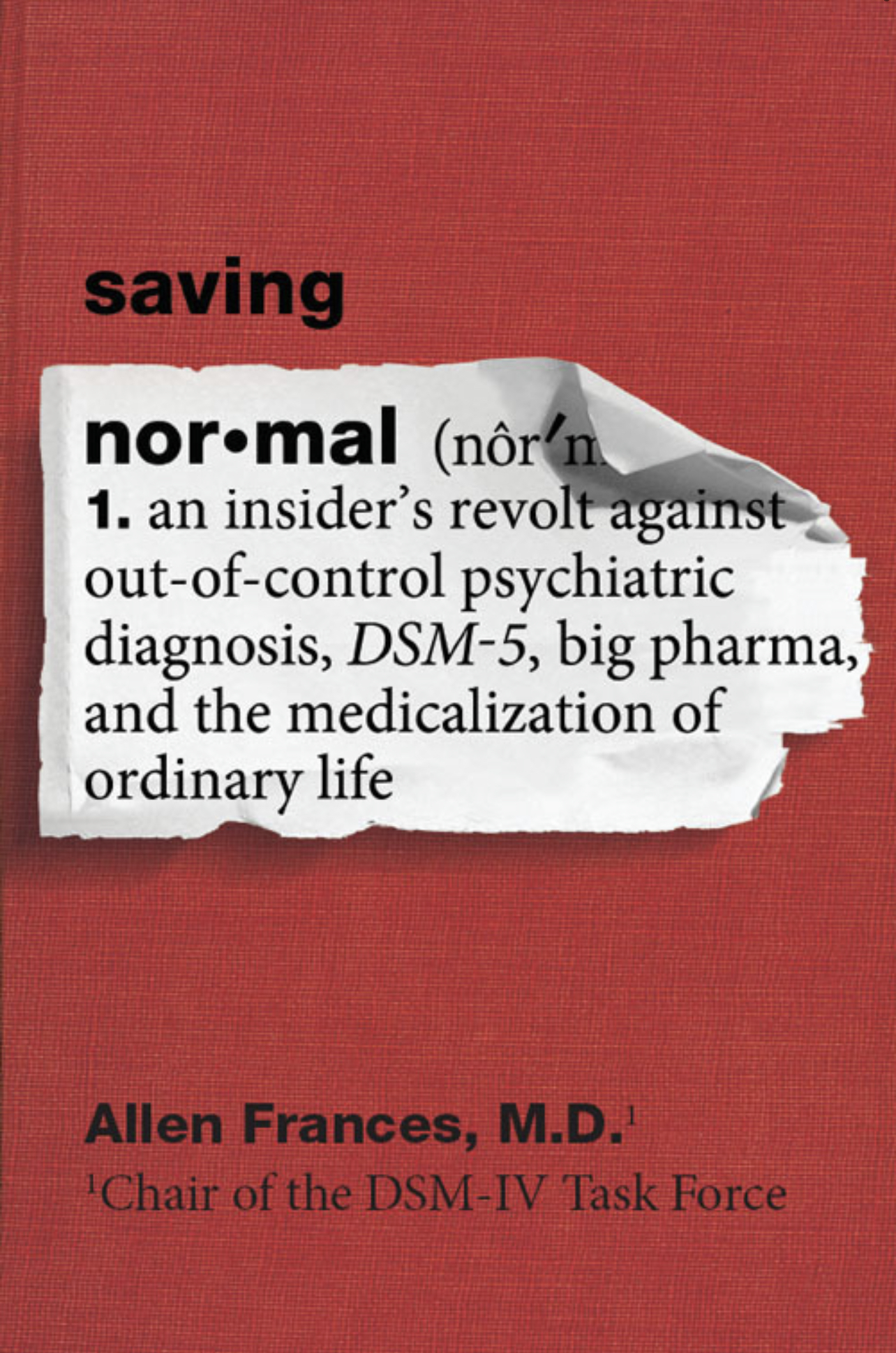Saving Normal Chapter 5. Fads of the Present
Author: Allen Frances Publisher: New York, NY: HarperCollins. Publish Date: 2014 Review Date: 2023-4-16 Status:📚
Annotations
196
The diagnosis of autism has exploded in the past twenty years. Before DSM-IV, this was an extremely rare condition, diagnosed in one child per two thousand. The rate has now jumped to one in eighty in the United States and an even more amazing one in thirty-eight in Korea.14,15,16
196
The first reaction was parental panic—worries about autism at the slightest sign that a child was not perfectly conventional.
197
All this reflects the general public misunderstanding of how psychiatric diagnosis works—i.e., that the prevalence rates are always extremely sensitive to any change in definition. The twentyfold increase in just twenty years occurred because diagnostic habits had changed radically, not because kids were suddenly becoming more autistic.18
- A. Frances, The Autism Generation, Project Syndicate, July 19, 2011; http://www.project-syndicate.org/commentary/the-autism-generation (accessed September 19, 2012).
197
Few people have the incapacitating symptoms of classic autism, and these are extremely easy to identify. In contrast, Asperger’s describes people who are strange in some ways (with stereotyped interests, unusual behaviors, and interpersonal problems) but not nearly so gravely impaired as those who have classic autism (which also includes an inability to communicate and lowered IQ). Because many normal people are eccentric and socially awkward, there is no clear line of demarcation separating them from Asperger’s. We had estimated that Asperger’s would be about three times more common than the classic, severe form of autism. But rates have artificially swelled because many people within the range of normal variability (or with other mental disorders) have been misidentified as autistic—especially when the diagnosis is made in primary care, in school systems, and by parents and patients.
198
The autism “epidemic” has three causes. Some part surely comes from improved surveillance and identification by doctors, teachers, families, and the patients themselves. Spotlighting any problem reduces stigma and improves case finding. Some was triggered by the DSM-IV introduction of Asperger’s disorder, a new diagnosis that greatly broadened the concept of autism. But about half of the “epidemic” is probably service driven—children get the diagnosis incorrectly because it is the ticket to more attention in the school system and more intense mental health treatment.
199
DSM-IV may have started the autism epidemic, but other powerful engines drove it forward beyond all expectation. Probably most important was the positive feedback loop between spirited patient advocacy and the provision of school and therapeutic programs that require an autism diagnosis. As the population of “autistic” patients and their families grew, they gained the power to push for many additional services—sometimes by initiating successful lawsuits. The additional services then provided further incentive to increased diagnosis. With more people diagnosed, there was then an even larger constituency to push for more services.19,20
373
- M. Ghaziuddin, “Should the DSM V drop Asperger syndrome?” J Autism Dev Disord 40 (2010): 1146–48.
373
- Alan Zarendo, “Warrior Parents Fare Best in Securing Autism Services,” Los Angeles Times, December 13, 2011, Local Section; http://www.latimes.com/news/local/autism/la-me-autism-day-two-html,0,3900437.htmlstory.
Notes
Amount: 1
